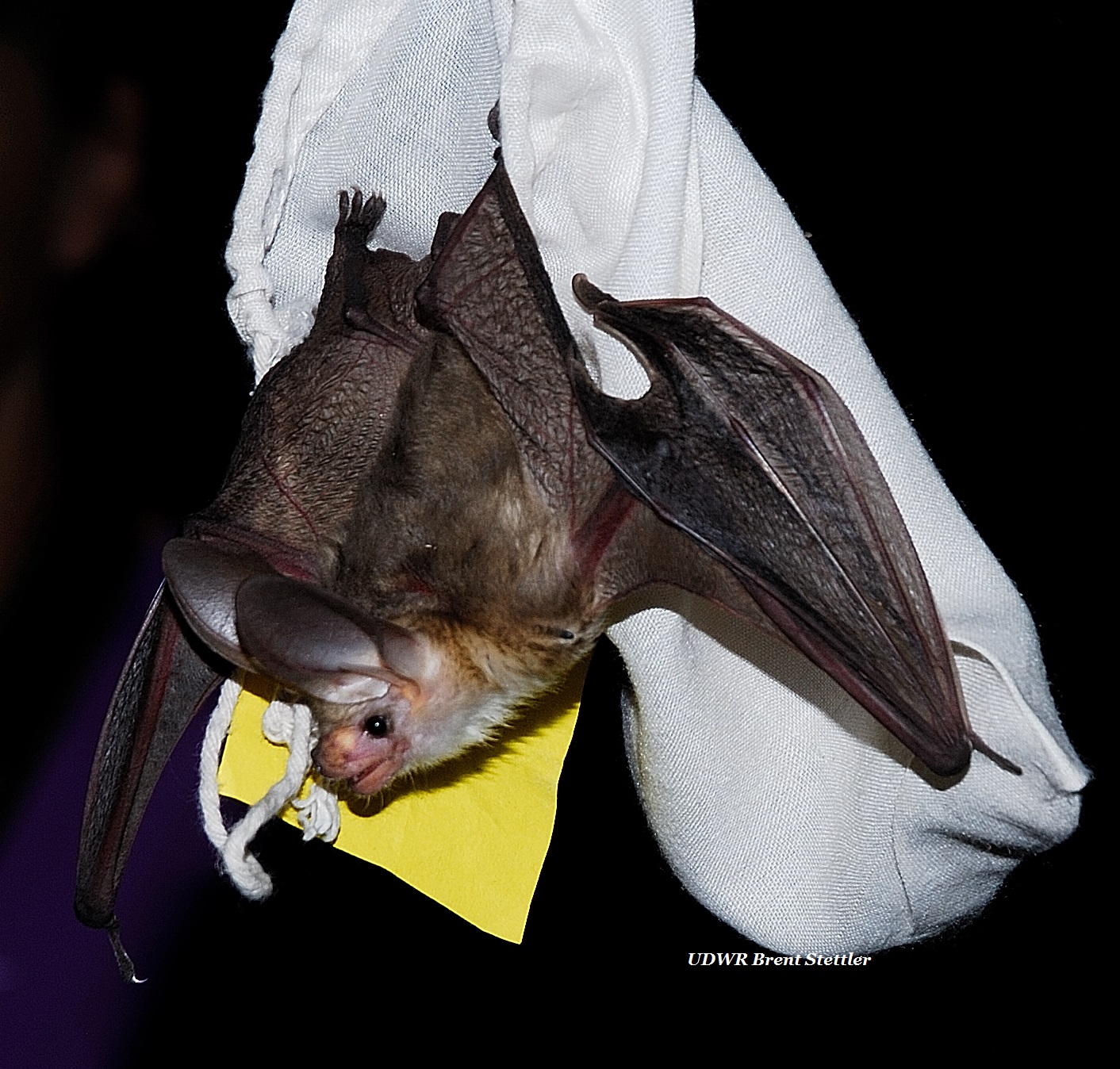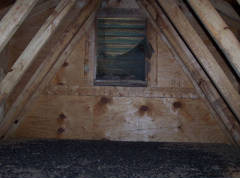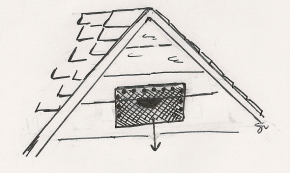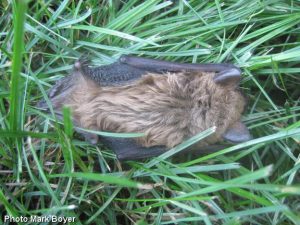Be Aware › Bats


Utah is home to eighteen species of bats, the only mammal capable of true flight. Bats can be found throughout the state and roost in a variety of habitats, which may include caves, mines, hollow trees, leafy plants, rock cliffs and buildings. They eat mostly insects.
The largest Utah bat, the big free-tailed bat, has a wingspan of 17 inches but weighs less than 1 oz. The smallest bat, the western pipistrelle, is the size of a hummingbird and weighs 1/10 oz.
A bat’s fur varies in color from tan, brown, rust, to black. Bats are shy animals that use echolocation to find flying insects. They benefit humans by eating about 30–100 percent of their body weight in insects each night.
Most Utah bat species are year-round residents of the state and hibernate during the winter. Some species migrate south and remain active all year. Migrating species breed in the spring. Hibernating bats usually breed in the fall. In the late spring, female bats gather in large nursery colonies where their young, called pups, are born in May or June. Natural enemies of bats include bobcats, hawks, house cats, owls, raccoons, ringtails, snakes and weasels.
Bat Vocalization
Free Pest Control
Did you know that one bat could eat up to 1,000 mosquitoes per hour? You can enjoy this free, natural pest control while you simultaneously prevent conflicts with bats. By providing bats with suitable backyard habitat, they can be encouraged to take up residence in dead trees and bat houses rather than in chimneys, attics or roof eaves. But while bats can be very good at pest control, they may not be able to combat serious infestations of some pests.
- Dead, hollowed out trees and thick shrubs make good bat roosting sites.
- Bats will also utilize artificial bat houses. Placement of a bat house is critical: It should be at least 12 feet off the ground, face south or southeast, and receive at least six hours of direct sun each day. The bat house should face an open area with at least 20 feet of clearance, so that bats can come and go with ease. Bat houses can be mounted on poles, garages, barns, and trees, although houses on trees are harder for bats to find and will take longer to become occupied.
- Bats also enjoy water features that attract insects, such as fountains or ponds.
- Planting night-blooming flowers such as moonflower, four-o’clock, yucca, evening primrose, night-blooming water lily or night-blooming jasmine will attract nighttime insect pollinators.
Installing a pole light on a section of your property will attract a lot of insects and in turn, bats.
Legal Status
Utah law protects all bat species. It is illegal to intentionally kill bats. Additional federal protection is extended to bat species on the Endangered Species List.
Bats and Humans

Conflicts with bats usually occur when bats use human dwellings as roost sites. Only a small percentage of bats actually carry rabies. But to be safe, any bat that behaves strangely or can be easily caught should be suspected of being ill and should be avoided.
Bats do not chew holes to make openings into buildings to set up roosting sites. They can enter buildings through open doors, windows as well as loose, torn screens, or through existing holes at least ¼ inch in diameter.
Bats don’t normally attack humans and, contrary to popular belief, they do not purposefully try to land in people’s hair. A bat flying around inside a room may appear to dive at people, but in fact, the diving behavior helps the bat regain its flight speed and control.
Bat Sign, Identify Damage and Conflict Prevention

Cleaning up after bats
When handling bat guano (feces), always wear a respiratory mask and rubber gloves.






Photos: Internet Center for Wildlife Damage Management (ICWDM) and USDA/WS
How to prevent bats from roosting in your home or property
- Identify the bat sign. Bat guano will be crumbly and full of insect parts.
- Cool your attic with fans to make it uncomfortable for bats to take up residence.
- Inspect the outside of the building for openings and gaps in siding, chimneys, and roof lines.
- Seal cracks and holes with caulking, hardware cloth, foam rubber, foam sealant, tarpaper and chimney caps. Do not do this, however, when bats have pups in May through July. Fall is the best time to seal these openings when bats are vacating roosts.
- You can also use bird netting to place over an opening. Staple it down at the top and the sides, leaving the base open. Bats will be able to drop down the netting to leave, but not reenter the roost. Leave it in place for 4–5 days or until all the bats have left, then seal the holes.




Install a chimney cap. Photos: Internet Center for Wildlife Damage Management (ICWDM) and USDA/WS
Avoiding Conflicts
Do not seal cracks and holes in attics and rooflines during the breeding season, which is late May through September. Doing so could result in leaving bat pups to die inside the property. Fall is the best time to seal these openings when bats are vacating roosts.
When possible, provide bats with alternative roosting sites by installing a bat house near your property.
Before Sealing Cracks
Place bird netting over the hole, and staple it tight along the top edge and down both sides. Leave the bottom of the net open. When bats try to leave, they will hit the netting and crawl down the siding, eventually making it out the open bottom.
When they return, they will be unable to fly back up under the netting to their roost. Leave the bird netting in place for at least 5–7 days to ensure that all bats have left.1
Temporary Roosts
Bats will sometimes temporarily roost on porches and patios, in garages, and behind shutters, shingles and roof gutters. Roosting behind shutters may also be long-term in duration. Actual control measures may not be necessary unless bat droppings become a problem or the risk of human contact is significant.
Coarse fiberglass batting tacked on to surfaces where bats prefer to hang sometimes discourages them. A potentially useful intervention for the wall-ceiling interface is the application of a wide 45-degree molding strip to eliminate the 90-degree angle corner and force the bats to roost in a more exposed area.2 Balloons or CDs hung from a porch ceiling may disturb bats enough to keep them from reusing the site for roosting.


Most bats in Utah vacate their roosts in the fall. That is the best time to patch holes and block access points. A variety of materials, such as caulk and self-expanding foam sealant, can be sprayed on urine soaked areas. Rubber, fiberglass, or steel wool can be used to close any openings. Metal screening, small mesh (< ¼ inch in diameter) wire hardware cloth or tar paper can be tacked over larger holes.1
Repellants
There are no effective repellants to stop bats from roosting.
Handling bats
Never attempt to touch bats with your bare hands. If a person or pet is bitten by a bat, they should get medical treatment immediately. The wound should be washed with soap and water, and your doctor and the health department should be contacted.
Rabies occurs in less than 1% of bats, but if contracted and not treated, it can be fatal. For that reason, any bat that behaves strangely (e.g., active during the day), or can be easily caught, must be suspected of being rabid and should be avoided.1
Pets and Bats
Occasionally pets catch bats. For this reason, keeping pets vaccinated against rabies reduces the risk to humans.1
Alternative Roosts



Before you exclude bats from openings on your home or building, be sure to offer them other places to find shelter nearby. Hollow trees, unused out-buildings and bat houses are good alternatives. Bat houses need to be secured to a tree trunk or building at least 12–15 feet above ground and out of direct sunlight. It may take a few weeks to a few years for bats to take up residence. Here are some instructions for building a simple bat house.
Providing bats with alternative roosts can encourage them to remain in the area and reduce their mortality when they are excluded. Potential roost sites may include hollow trees and unused barns or out-buildings, providing the roofs are intact and large openings are closed to provide additional protection from inclement weather. In addition, bat houses can be constructed and placed around the property. Ideally, alternative roosts should be prepared before the bats are excluded from the original site. 1
Never handle a bat with your bare hands!
- If a bat is trapped in a room, open an outside door or window (including the screen), leave the area and allow the bat to leave on its own.
- You can pick up the bat and move it to a new location if you wear thick, leather gloves.
- Place a small box or can over the bat. To create a lid, slide a piece of cardboard between the can and the wall or curtain, enclosing the bat inside the container.
- Take the bat outside and release it on a tree or other high object.
- Do not leave the bat in the container; it will have difficulty crawling out.
- If you are uncomfortable approaching a bat, or suspect it may be sick, do not attempt to capture it.
How to safely remove a bat flying around inside your home
- Do not swat at a flying bat. Wait for it to land.
- ALWAYS wear gloves!
- Open a door or window and turn off the lights inside. Turn on a porch light outside. Leave the room and allow the bat to leave on its own.
- Use a towel to place over the bat once it lands on something low to the ground. If the bat is on a curtain or wall, use a small bucket or coffee can and place it over the bat, then slide a stiff piece of cardboard between the can and the wall, trapping the bat inside the can.
- Take the bat outside, some distance from your home, and place it on a high area so predators cannot get to it. Do not leave the bat in the container; it will have difficulty crawling out. If it is in a towel, loosen the towel so it can crawl out.
If a person is bitten
Get medical treatment immediately. The wound should be washed with soap and water, and your doctor and the local health department should be contacted. Every attempt should be made to capture the bat alive using the technique described above. The captured bat should then be taken to the health department for rabies testing.
Bats and pets
Vaccinate your pets against rabies for their protection and yours. Do not let pets play with bats.

If you have problems with bats that cannot be resolved by following these tips, consult a professional, licensed animal control company.
References
- Wildlife Damage Management Series: Bats. USU Cooperative Extension.
- Internet Center for Wildlife Damage Management Arthur M. Greenhall, Research Associate; Stephen C. Frantz, Vertebrate Vector Specialist

